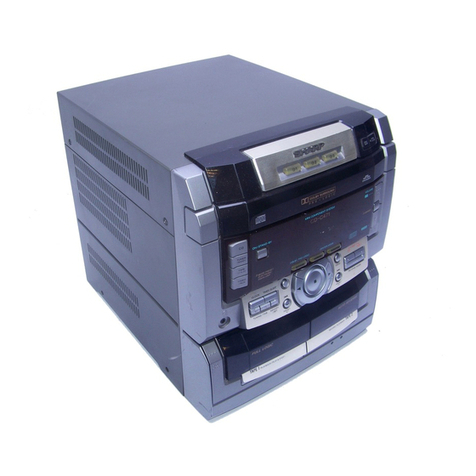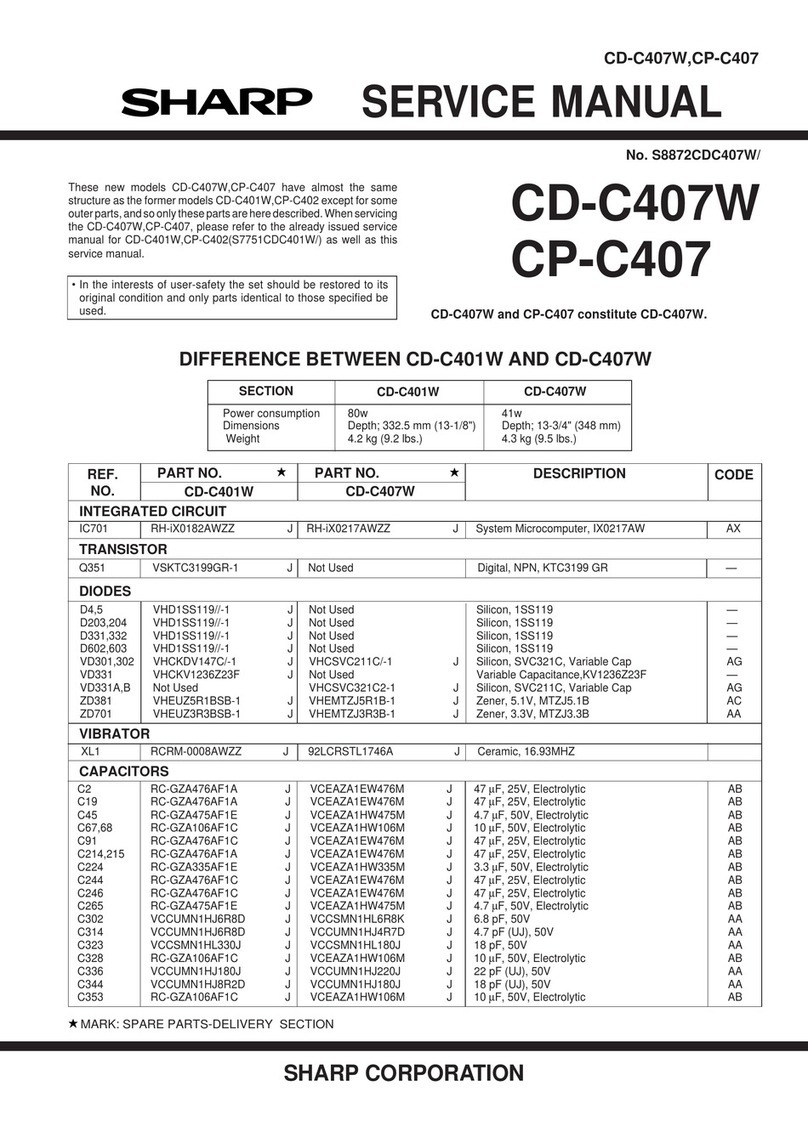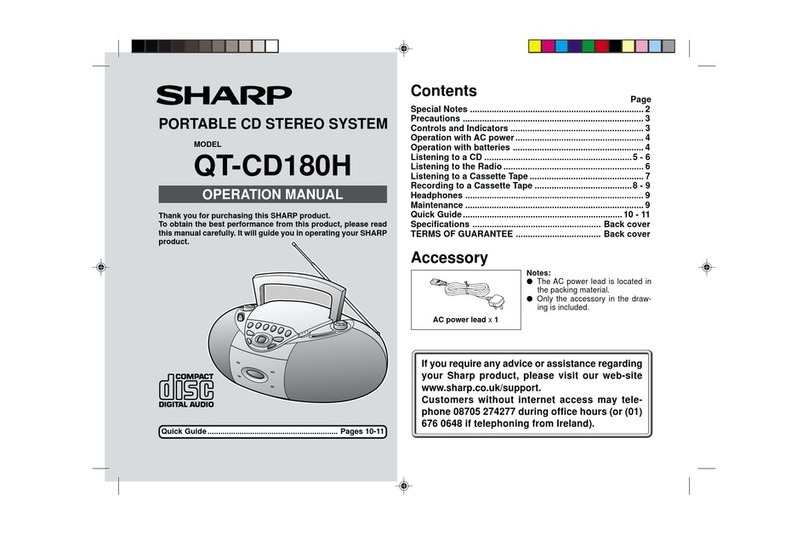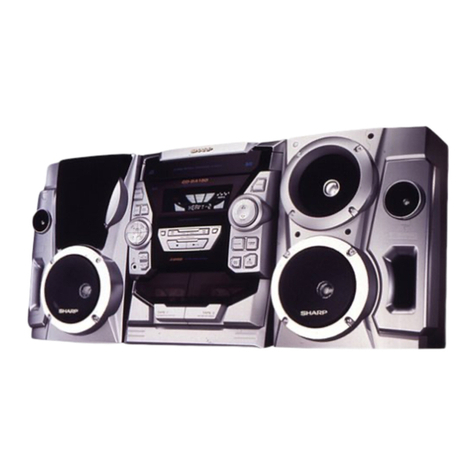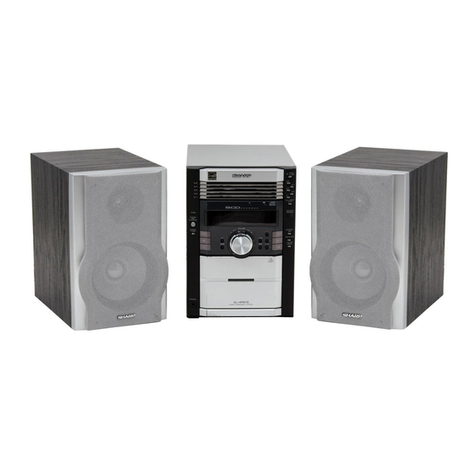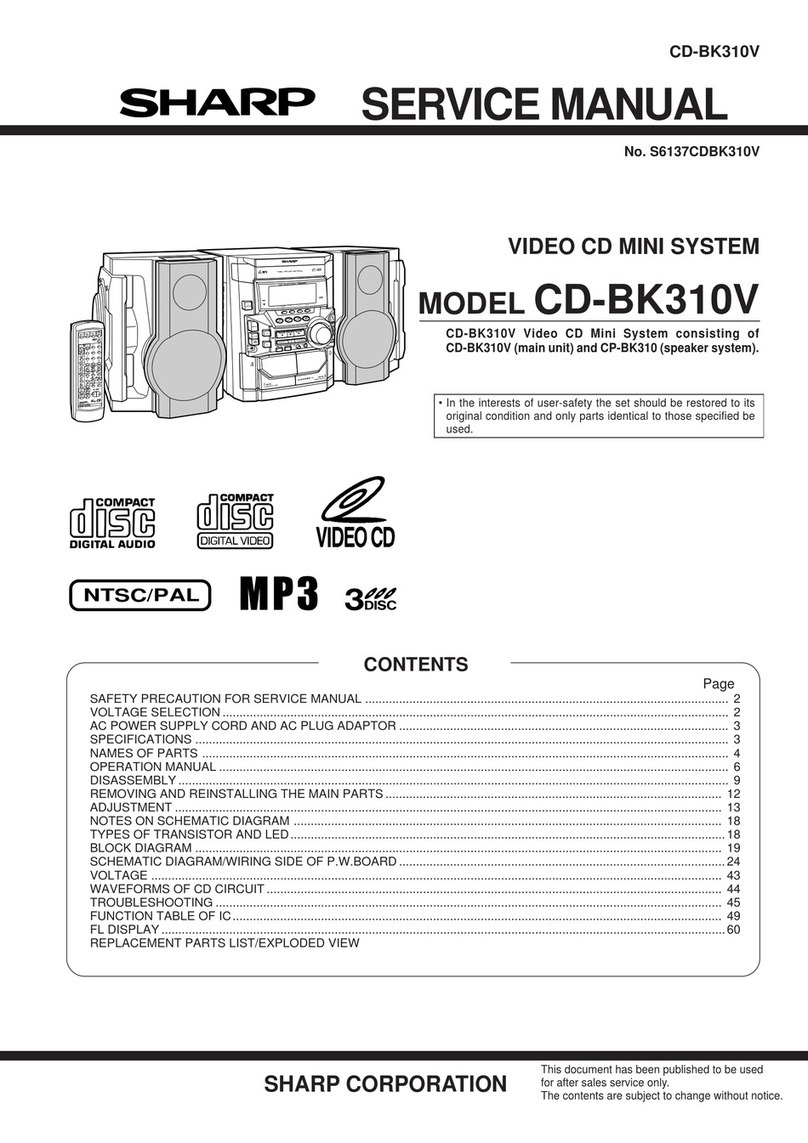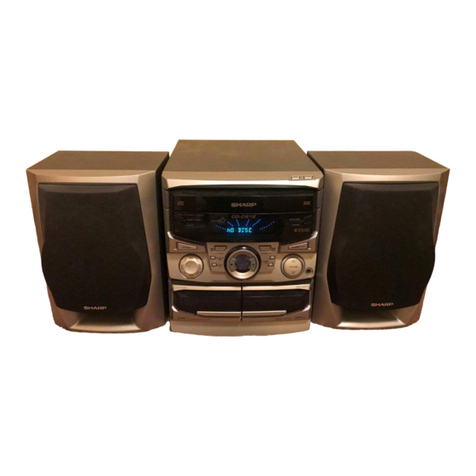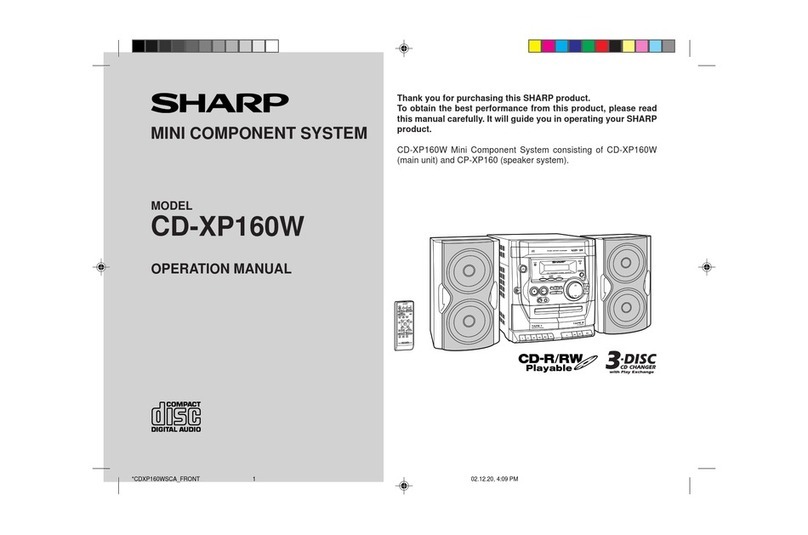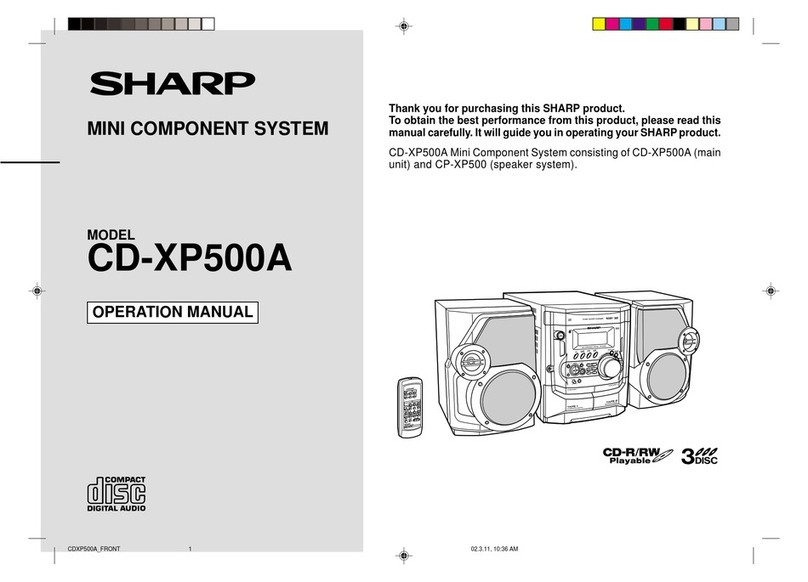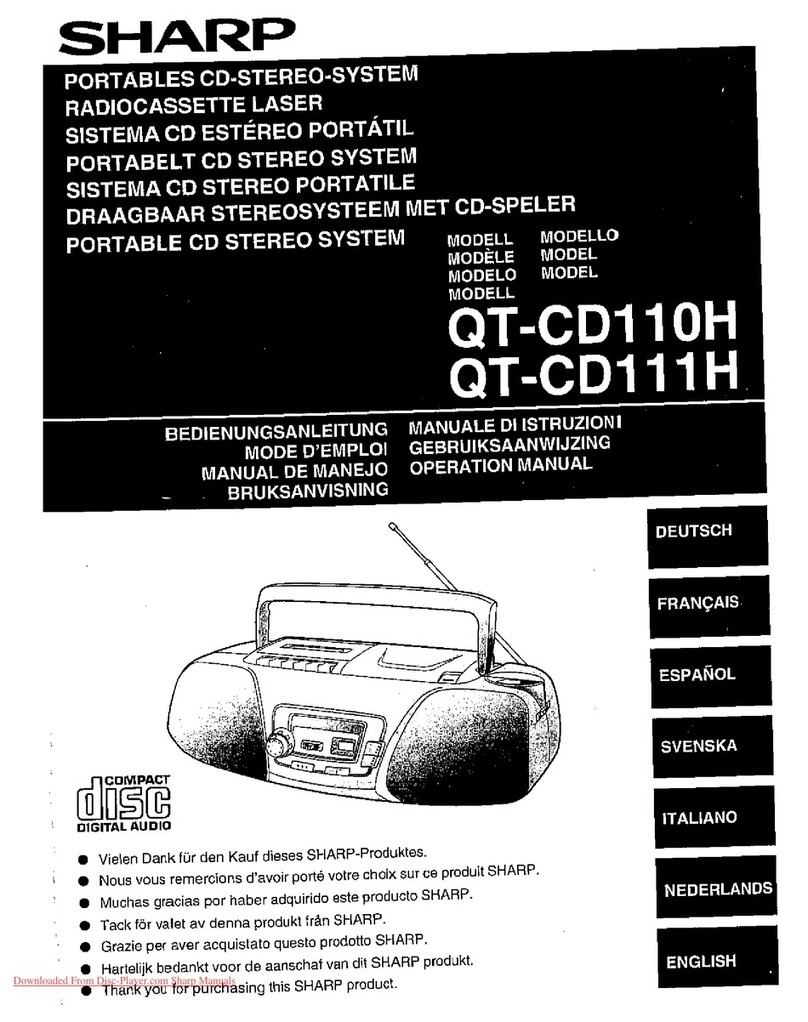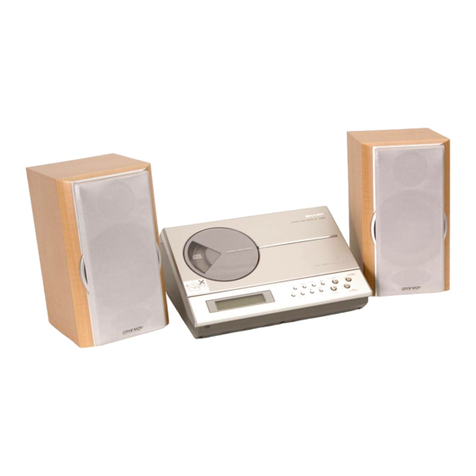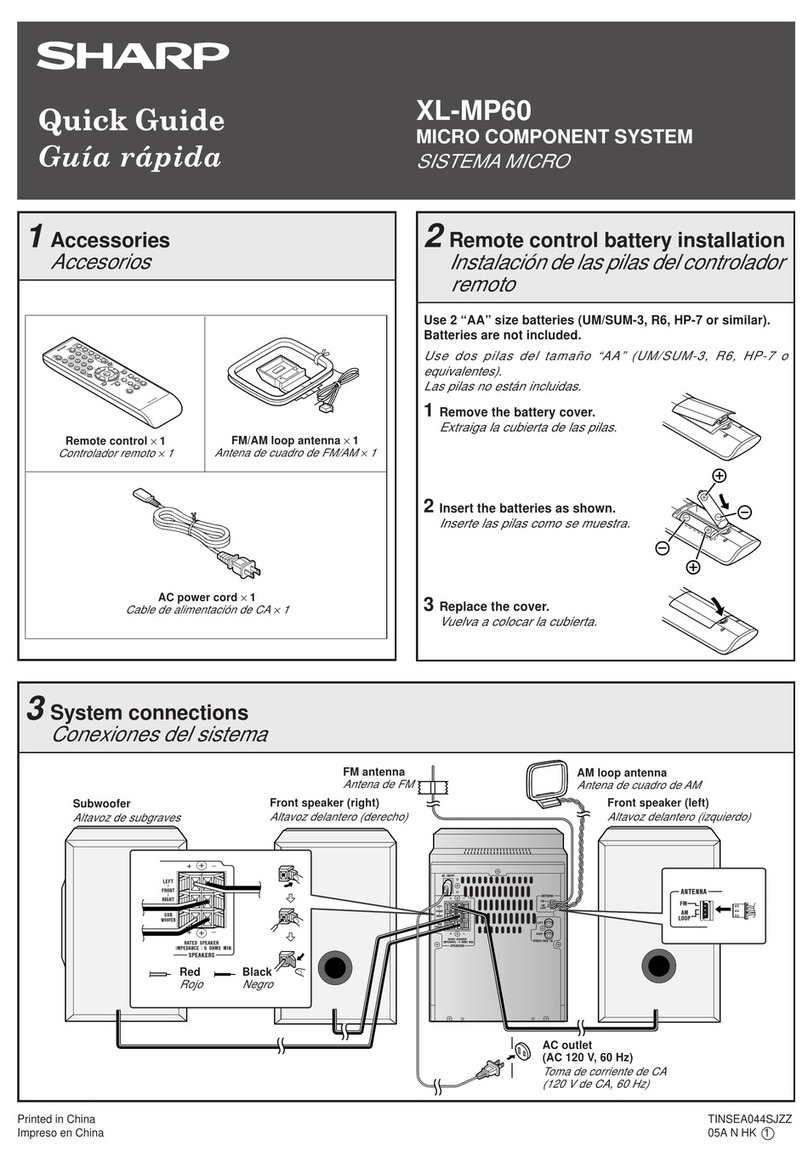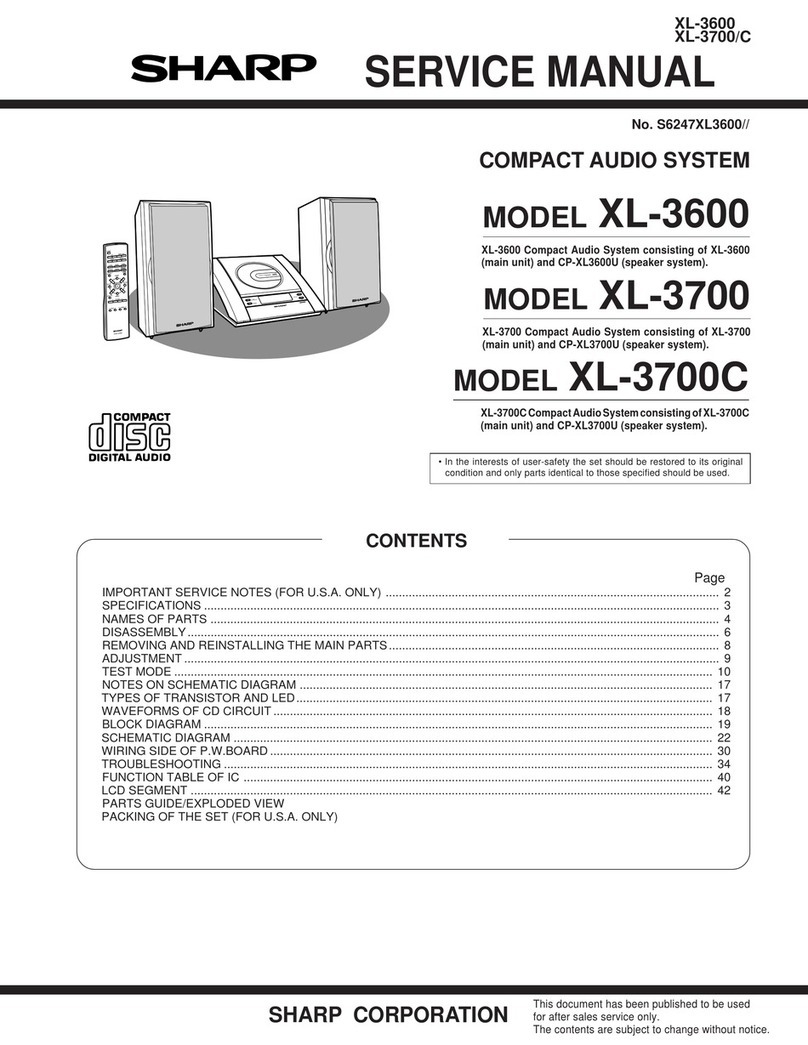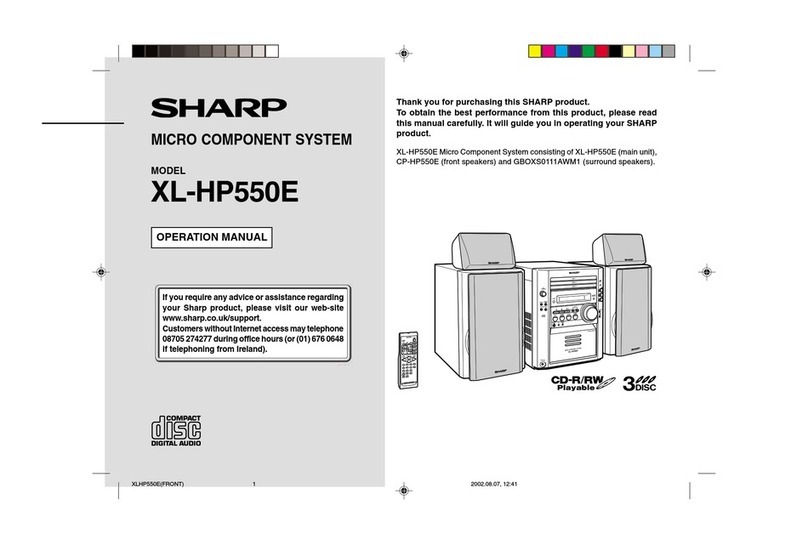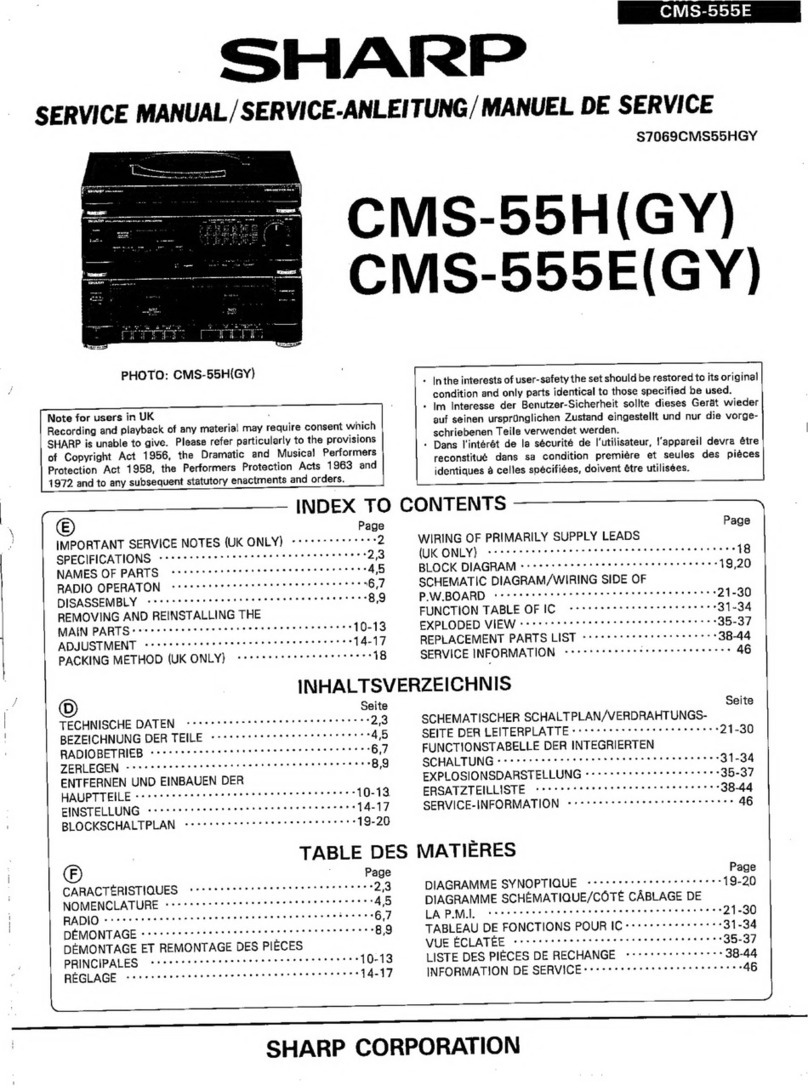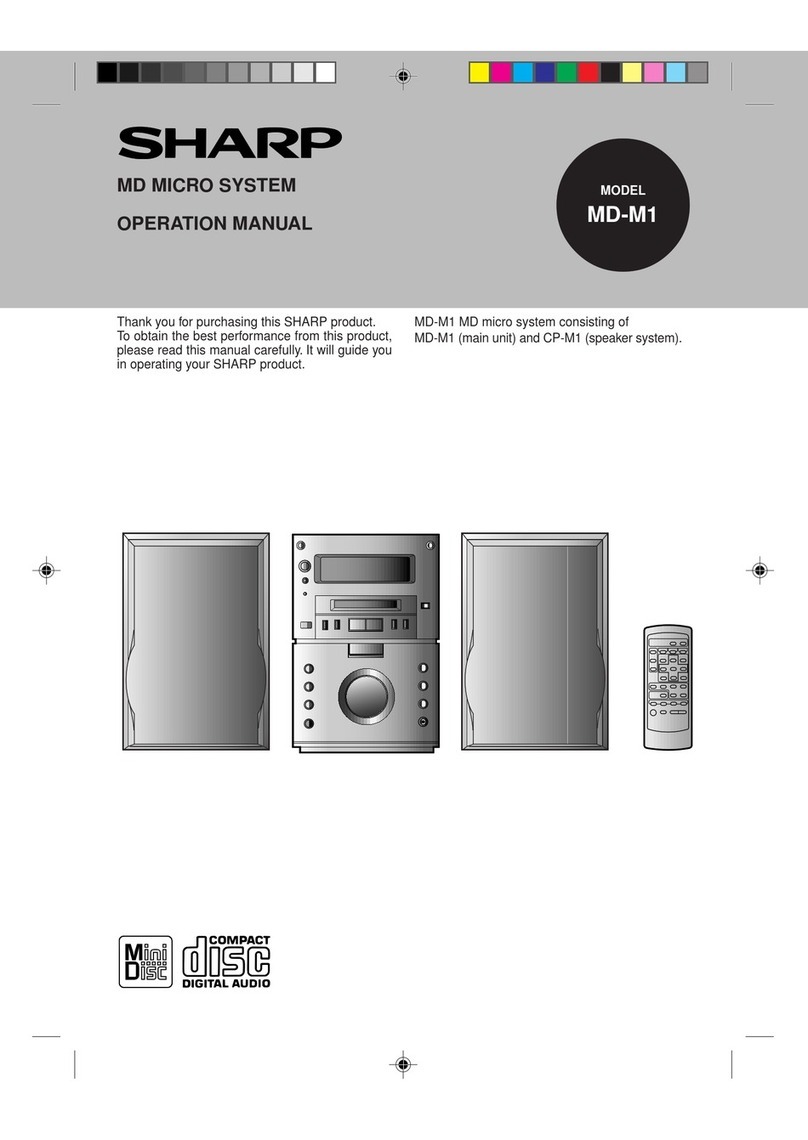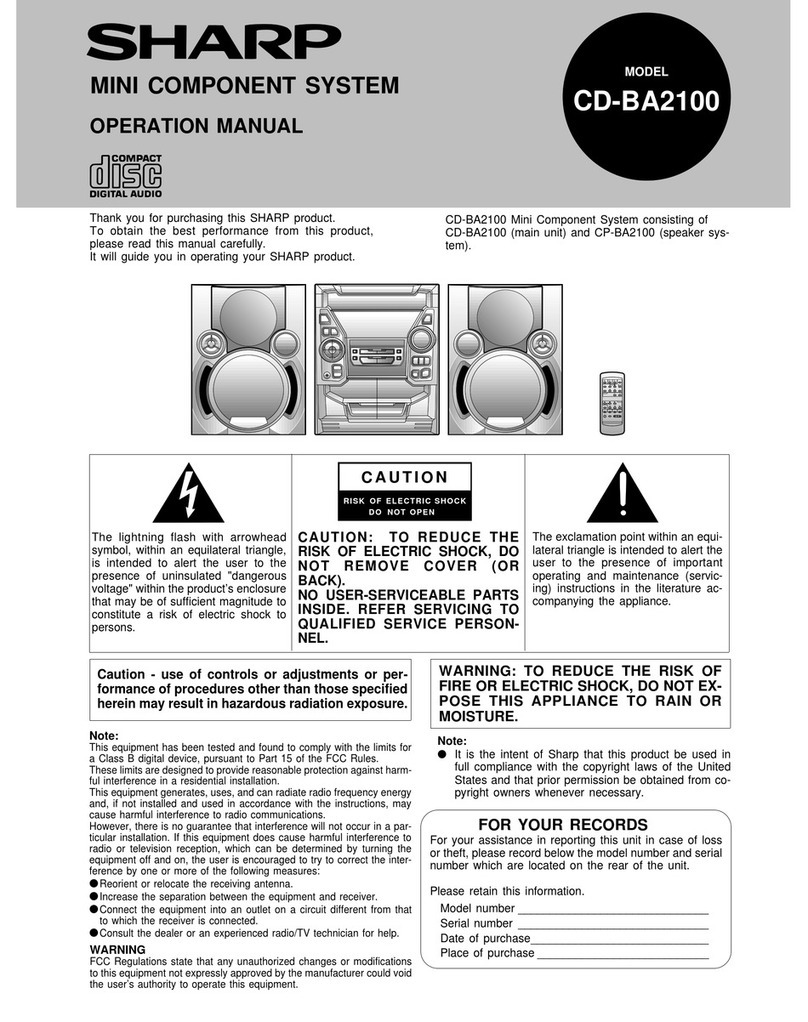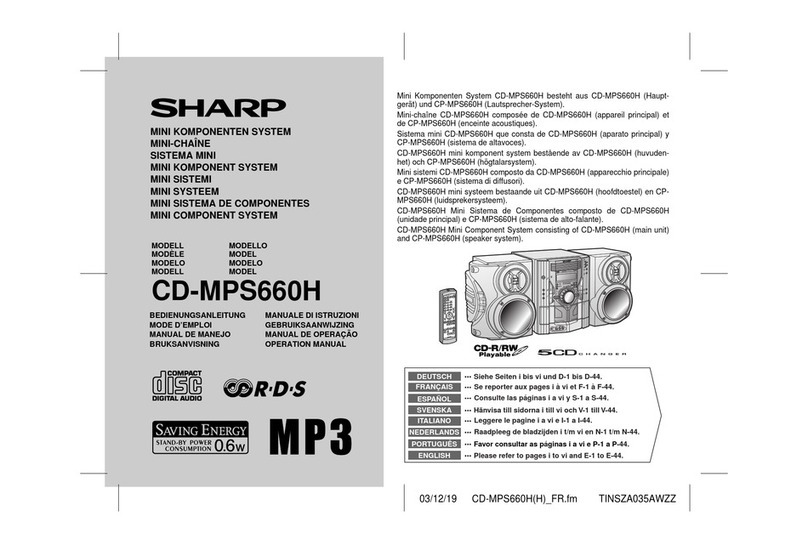
CD-E500
CD-E55/E44
– 2 –
SPECIFICATIONS
FOR A COMPLETE DESCRIPTION OF THE OPERATION OF THIS UNIT, PLEASE REFER
TO THE OPERATION MANUAL.
Specifications for this model are subject to change without
prior notice.
IMPORTANT SERVICE NOTES (FOR U.S.A. ONLY)
BEFORE RETURNING THE AUDIO PRODUCT
(Fire & Shock Hazard)
Before returning the audio product to the user, perform the
following safety checks.
1. Inspect all lead dress to make certain that leads are not
pinchedorthathardwareisnotlodgedbetweenthechassis
and other metal parts in the audio product.
2. Inspect all protective devices such as insulating materials,
cabinet,terminalboard,adjustmentandcompartmentcovers
or shields, mechanical insulators etc.
3. To be sure that no shock hazard exists, check for leakage
current in the following manner.
* Plug the AC line cord directly into a 120 volt AC outlet.
* Using two clip leads, connect a 1.5 kohm, 10 watt resistor
paralleled by a 0.15 µF capacitor in series with all exposed
metal cabinet parts and a known earth ground, such as
conduit or electrical ground connected to earth ground.
* Use a VTVM or VOM with 1000 ohm per volt, or higher,
sensitivity to measure the AC voltage drop across the
resistor (See diagram).
* Connect the resistor connection to all exposed metal parts
havingareturnpathtothechassis(antenna,metalcabinet,
screw heads, knobs and control shafts, escutcheon, etc.)
and measure the AC voltage drop across the resistor.
TO EXPOSED
METAL PARTS
CONNECT TO
KNOWN EARTH
GROUND
TEST PROBE
0.15 µF
1.5 kohms
10 W
VTVM
AC SCALE
■General
■Amplifier (Except for Canada)
(For Canada)
(CD-E500/E55)
(CD-E44)
Power source AC 120 V, 60 Hz
Power
consumption 96 W
Dimensions Width: 10-5/8" (270 mm)
Height: 12" (305 mm)
Depth: 13-1/2" (342 mm)
Weight 14.5 lbs. (6.6 kg)
Output power 50 watts minimum RMS per channel into 8
ohms from 100 Hz to 20 kHz, 10% total har-
monic distortion
Output terminals Speakers: 8 ohms
Headphones: 16 - 50 ohms (recommended:
32 ohms)
Input terminals Video/Auxiliary (audio signal): 500 mV/47 k
ohms
■Amplifier
Output power RMS: 100 W (50 W + 50 W) (10 % T.H.D.)
Output terminals Speakers: 8 ohms
Headphones: 16 - 50 ohms (recommended:
32 ohms)
Input terminals Video/Auxiliary (audio signal): 500 mV/47 k
ohms
■CD player
■Tuner
■Cassette deck
■Speaker
Type 3-disc multi-play compact disc player
Signal readout Non-contact, 3-beam semiconductor laser
pickup
D/A converter 1-bit D/A converter
Frequency
response 20 - 20,000 Hz
Dynamic range 90 dB (1 kHz)
Frequency range FM: 87.5 - 108 MHz
AM: 530 - 1,720 kHz
Frequency
response 125 - 8,000 Hz (normal tape)
Signal/noise ratio 50 dB (TAPE 1, playback)
50 dB (TAPE 2, recording/playback)
Wow and flutter 0.3 % (WRMS)
Type Twin-drive speaker system
4" (10 cm) woofer 2
Maximum input
power 100 W
Rated input power 50 W
Impedance 8 ohms
Dimensions Width: 7-7/8" (200 mm)
Height: 12" (305 mm)
Depth: 7-1/16" (180 mm)
Weight 5.7 lbs. (2.6 kg)/each
■Speaker
Type 2-way type speaker system
2" (5 cm) tweeter
5" (13 cm) woofer
Maximum input
power 100 W
Rated input power 50 W
Impedance 8 ohms
Dimensions Width: 7-7/8" (200 mm)
Height: 12" (305 mm)
Depth: 7-1/16" (180 mm)
Weight 7.0 lbs. (3.2 kg)/each
AllcheckmustberepeatedwiththeAClinecordplugconnection
reversed.
Anyreadingof0.3voltRMS(thiscorrespondsto0.2milliamp.
AC.) or more is excessive and indicates a potential shock
hazard which must be corrected before returning the audio
product to the owner.
